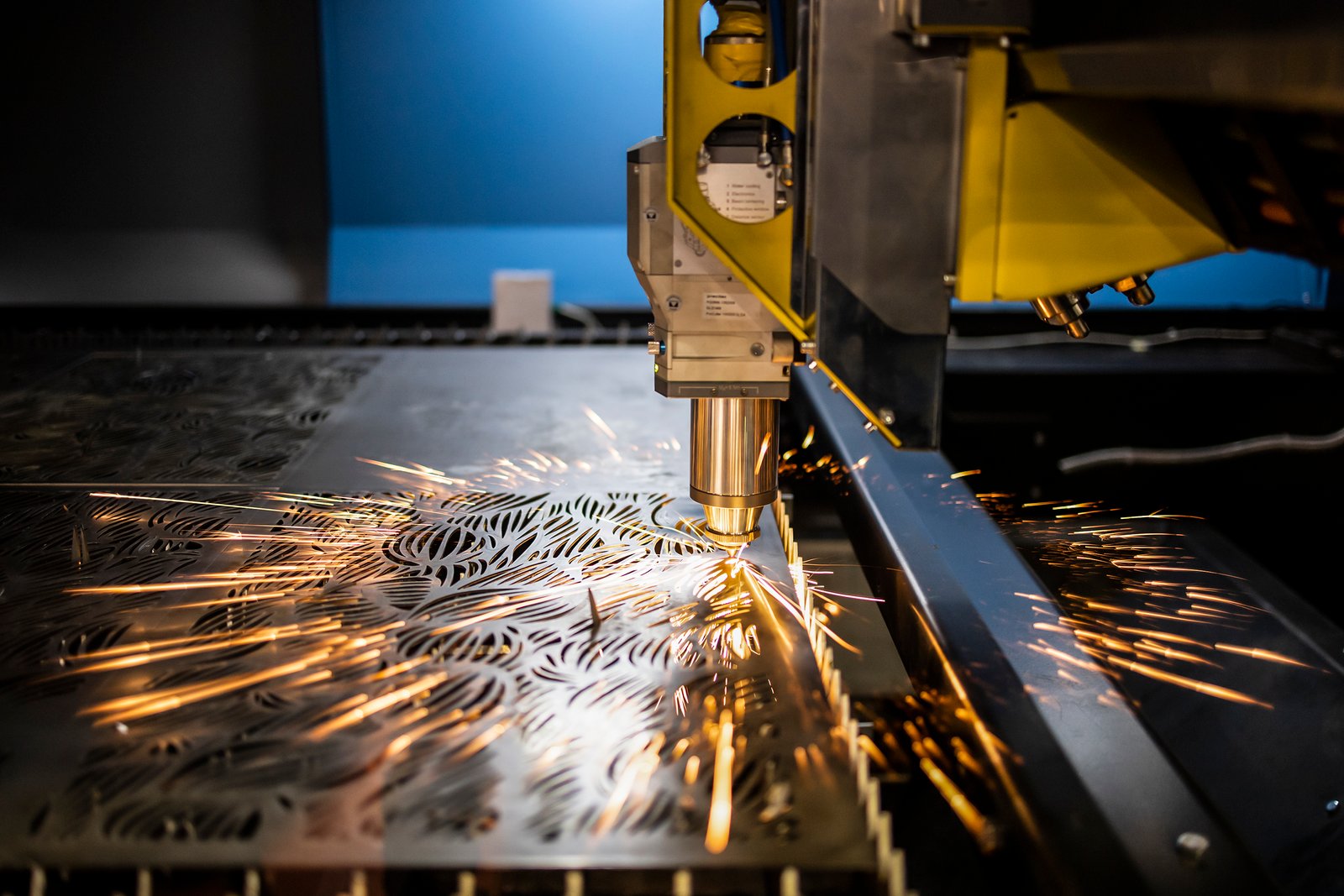
Have you ever wondered how those intricate metal parts in your car or phone are made? The answer might surprise you - it involves lasers! Fiber laser cutting is a revolutionary technology that's transforming metal fabrication. But what exactly is it, and how does it work?
What is fiber laser cutting?
Fiber laser cutting is a metal fabrication technique that uses a powerful, concentrated beam of light to melt and vaporize metal, creating clean and precise cuts. It's like having a super-focused light straw that can cut through metal!
How fiber laser cutting works?
- Laser Generation: The laser beam is generated by an optical fiber, which amplifies the light to create a powerful and focused beam.
- Directing the Beam: The laser beam is directed through a cutting head with a lens that focuses it onto the material.
- Cutting the Material: The intense laser beam melts, burns, or vaporizes the material, creating a cut. The precision of the laser allows for very accurate and clean cuts.
- Assist Gases: Gases like nitrogen or oxygen are often blown through the cutting area to remove molten material and help achieve a cleaner cut.
- Controlled Movement: A computer-controlled system (CNC) moves the laser head and material to follow the exact cutting path programmed into the machine.
This combination of high power, precise control, and assist gases makes fiber laser cutting a highly efficient and accurate method for cutting a wide range of materials.
Types of material suitable for fiber laser cutting
Fiber laser cutting is highly versatile and can effectively cut a wide range of materials, including:
Metals
- Stainless Steel: Provides clean, precise cuts, ideal for kitchen appliances and medical devices.
- Aluminum: Cuts quickly and efficiently, used in automotive and aerospace industries.
- Mild Steel: Suitable for construction and machinery manufacturing due to its strength and affordability.
- Brass and Copper: Reflective metals that can be cut with adjustments, used in electrical components and decorative items.
Non-Metals
- Plastics: Such as acrylic and polycarbonate, used in signage and protective covers.
- Composites: Like carbon fiber composites, used in aerospace and sports equipment for their high strength-to-weight ratios.
Fiber laser cutting excels with metals, providing high precision and clean edges, but it also effectively handles certain non-metals with proper adjustments.
Benefits
Precision and Accuracy: Provides highly accurate cuts with clean edges, making it ideal for intricate designs and detailed work.
Efficiency and Speed: Cuts materials faster than many traditional methods, reducing production time.
Versatility: Can cut a wide range of materials, including various metals and some non-metals.
Reduced Waste: Produces minimal waste due to precise cutting, making it more environmentally friendly.
Cost-Effectiveness: Lower operational costs over time due to faster cutting speeds and reduced waste.
Low Maintenance: Fiber lasers have fewer moving parts and longer lifespans, leading to lower maintenance requirements.
Energy Efficiency: Consumes less energy compared to other cutting methods, contributing to overall cost savings.
Application
- Automotive Industry: Cutting intricate parts and components for vehicles.
- Aerospace Industry: Producing precise parts that require high accuracy and reliability.
- Electronics: Cutting small, detailed parts for devices and circuit boards.
- Construction and Architecture: Creating custom metal designs and structures.
- Medical Devices: Manufacturing precise, small-scale parts for medical equipment.
- Signage and Advertising: Producing detailed and custom designs for signs and displays.
- Jewelry Making: Creating intricate and delicate designs with high precision.
- Machinery and Equipment: Fabricating parts and components for various types of machinery.
These applications demonstrate the versatility and importance of fiber laser cutting across multiple fields.
Choosing the right fiber laser cutting service
- Look for a provider with extensive experience and a track record of successful projects in your industry.
- Ensure they have modern fiber laser cutting machines with the latest technology for optimal results.
- Verify that they have experience cutting the specific materials you require for your project.
- Check if they can handle the size and complexity of your project, including any additional services like design or finishing.
- Seek certifications or quality assurance measures to ensure high-quality results.
- Read reviews and testimonials from previous clients to gauge their reputation and customer satisfaction.
- Choose a service provider that communicates effectively and collaborates with you throughout the project to meet your requirements and deadlines.
Conclusion
Fiber laser cutting has revolutionized metal fabrication, offering unmatched precision, speed, and versatility. From intricate car parts to stunning works of art, its applications are vast and ever-expanding. As the technology continues to advance, we can expect even more possibilities in the future.
Century Steel offers fiber laser cutting services with extensive experience across various industries. Our team of experts can handle projects of any size and complexity, ensuring the highest quality and precision for your specific needs.
Contact Century Steel today for a free quote! We'd be happy to discuss your project requirements and demonstrate how fiber laser cutting can take your metal fabrication to the next level.
